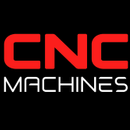Industrial Internet of Things (IIoT): Leading the Way into the Next Industrial Revolution

Industrial Internet of Things (IIoT): Leading the Way into the Next Industrial Revolution
The Industrial Internet of Things (IIoT) is transforming the manufacturing landscape, ushering in a new era of connectivity, efficiency, and data-driven decision-making. As we move deeper into this next Industrial Revolution, manufacturers must address the critical challenge of securing the vast amounts of data generated by interconnected devices. This article explores what IIoT is in 2024, the advancements expected by 2030, a case study highlighting its impact, and the technologies that may become obsolete in this evolving environment.
What is IIoT in 2024?
In 2024, the IIoT encompasses the integration of physical industrial equipment with digital technologies to create a cohesive network of interconnected devices. These smart devices collect and exchange data, enabling real-time monitoring, predictive maintenance, and enhanced operational efficiency.
Key Components of IIoT in 2024:
- Sensors and Actuators: Embedded in machines, these devices collect data on various parameters such as temperature, pressure, and vibration, providing critical insights into machine health and performance.
- Connectivity: Advanced networking technologies like 5G ensure fast and reliable data transmission between devices, facilitating seamless communication across the manufacturing floor.
- Data Analytics: Big data analytics and artificial intelligence (AI) are used to process and analyze the vast amounts of data generated by IIoT devices, turning raw data into actionable insights.
- Edge Computing: Processing data at the edge, closer to where it is generated, reduces latency and enhances real-time decision-making capabilities.
- Cloud Computing: Centralized data storage and advanced analytics in the cloud provide scalability and accessibility, enabling manufacturers to leverage insights from vast data sets.
Advancements by 2030
By 2030, IIoT is expected to advance significantly, driven by ongoing technological innovations and the increasing adoption of smart manufacturing practices.
Expected Advancements:
- Hyper-Connectivity: The proliferation of 6G networks will further enhance connectivity, supporting even more devices and higher data transfer rates.
- AI and Machine Learning Integration: Advanced AI algorithms and machine learning models will enable even more sophisticated predictive maintenance, quality control, and process optimization.
- Digital Twins: The use of digital twins—virtual replicas of physical assets—will become more widespread, allowing manufacturers to simulate, monitor, and optimize processes in real-time.
- Enhanced Cybersecurity: With the increasing volume of data and connected devices, robust cybersecurity measures, including AI-driven threat detection and blockchain technology, will be crucial to protect sensitive information and prevent cyberattacks.
- Sustainable Manufacturing: IIoT will play a key role in promoting sustainability, enabling manufacturers to monitor and optimize energy usage, reduce waste, and improve resource efficiency.
Case Study: IIoT in Action
Company:
Precision Machining Solutions (PMS)
Industry:
Aerospace Component Manufacturing
Challenge:
PMS faced issues with unplanned downtime and inefficient maintenance practices, leading to increased operational costs and reduced productivity.
Solution:
PMS implemented an IIoT solution, integrating sensors and actuators across their machinery to monitor critical parameters in real-time. They utilized edge computing for immediate data processing and AI-driven analytics for predictive maintenance.
Results:
- Reduced Downtime: Predictive maintenance alerts allowed PMS to address potential machine failures before they occurred, reducing unplanned downtime by 40%.
- Improved Efficiency: Real-time monitoring and data analytics optimized machine performance, increasing overall operational efficiency by 25%.
- Cost Savings: The implementation of IIoT resulted in significant cost savings on maintenance and repairs, as well as increased production output.
Technologies That May Become Obsolete
As IIoT continues to evolve, several traditional technologies and practices are likely to become obsolete:
- Manual Monitoring and Data Collection: The reliance on human operators for monitoring machine performance and collecting data will diminish, replaced by automated and real-time data collection through sensors and connected devices.
- Legacy Communication Protocols: Older, slower communication protocols will be phased out in favor of advanced networking technologies like 5G, which offer higher speeds and greater reliability.
- Standalone Maintenance Systems: Traditional, reactive maintenance systems that rely on scheduled maintenance checks will be replaced by predictive and prescriptive maintenance solutions enabled by IIoT and AI.
- Paper-Based Documentation: The use of paper-based records for maintenance logs, production reports, and quality control will be replaced by digital records, ensuring greater accuracy, accessibility, and efficiency.
Securing Big Data in IIoT
As manufacturers increasingly rely on IIoT, securing the vast amounts of data generated by connected devices becomes paramount. Here are key strategies to ensure data security:
- Encryption: Data encryption ensures that information is protected during transmission and storage, preventing unauthorized access.
- Access Controls: Implementing robust access control measures ensures that only authorized personnel can access sensitive data and critical systems.
- Regular Updates and Patches: Keeping software and firmware up to date with the latest security patches helps protect against vulnerabilities.
- AI-Driven Threat Detection: Utilizing AI to detect and respond to cyber security threats in real-time enhances the ability to prevent data breaches and cyber attacks.
- Blockchain Technology: Employing blockchain for secure and transparent data transactions can enhance data integrity and prevent tampering.
The Industrial Internet of Things is leading the way into the next Industrial Revolution, transforming manufacturing with unprecedented levels of connectivity, efficiency, and data-driven insights. By 2030, the continued advancement of IIoT will further enhance the capabilities of manufacturers, enabling them to achieve greater productivity, sustainability, and competitiveness. However, as the volume of big data grows, ensuring robust data security will be essential to protect sensitive information and maintain the integrity of manufacturing operations. Embracing IIoT and its associated technologies will position manufacturers at the forefront of innovation, ready to meet the challenges and opportunities of the future.


